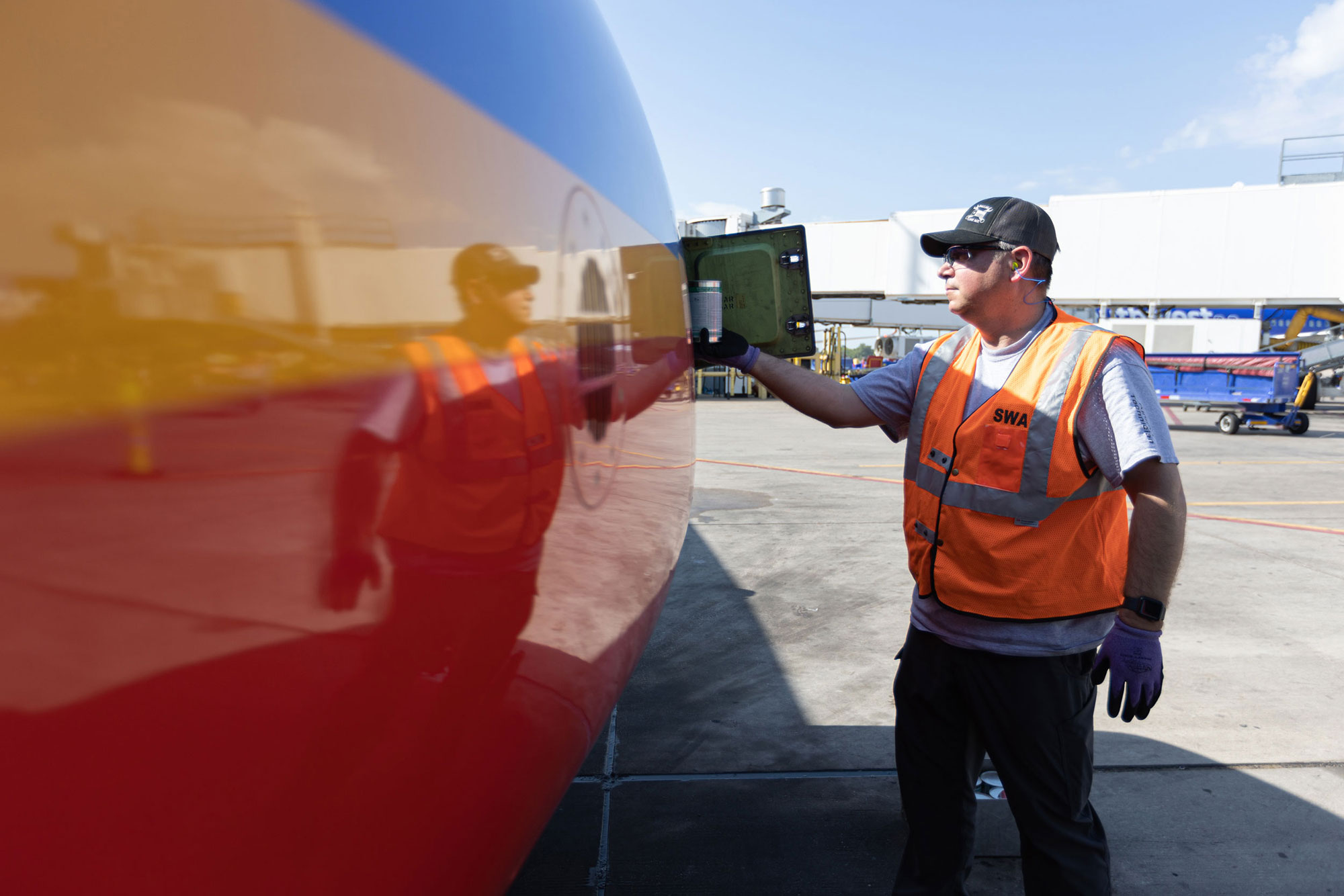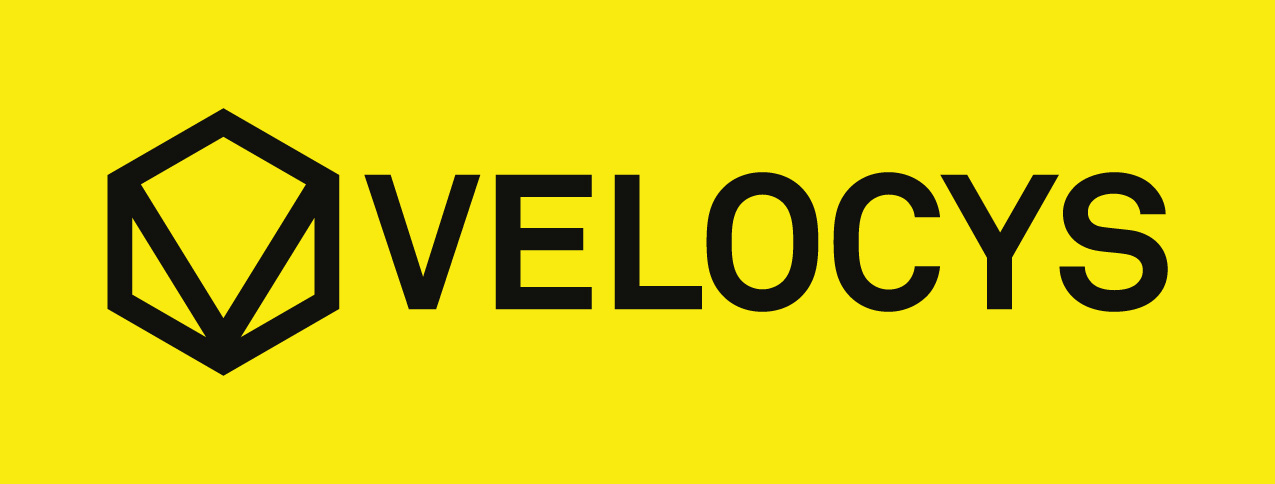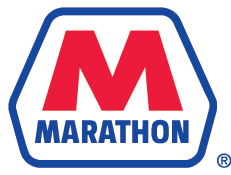
Sustainable Aviation Fuels (SAF)
SAF is fuel produced from non-fossil fuel sources that can result in lower greenhouse gas (GHG) emissions than conventional jet fuel on a lifecycle basis. As a fully certified drop-in fuel when blended with conventional jet fuel in accordance with industry standards, SAF is compatible with existing infrastructure. Because the use of SAF in the place of conventional jet fuel has the potential to reduce lifecycle GHG emissions and does not require any modifications to infrastructure or aircraft, it's crucial to decarbonizing aviation.
SAF plays an important role in our environmental sustainability plan and path to achieve net zero carbon emissions by 2050. By 2030, we plan to replace 10% of our total jet fuel consumption with SAF.
How SAF Works

SAF can be made from a variety of feedstocks, both biomass-based and non-biomass based, using different kinds of technologies known as pathways.
Here's how SAF works:
There are different types of feedstocks, including:
- Fats, oils, and greases (FOGs), which can come from used cooking oil and tallow, energy or cover crops like willow wood and switchgrass, and edible oil crops like corn.
- Biomass, such as forestry and agricultural residues and municipal solid waste. Examples include waste woody biomass and corn stover.
- Carbon captured directly from the atmosphere, also known as direct air capture (DAC), which is non-biomass based. Fuel made through a process involving renewable energy, carbon from DAC, and green hydrogen is generally referred to as power-to-liquid (PtL), synthetic fuel (synfuel), and/ or e-fuel.
There are several approved pathways to convert feedstocks into SAF, including:
- Hydroprocessed esters and fatty acids (HEFA) converts FOGs into jet fuel.
- Alcohol-to-jet (ATJ) converts ethanol or isobutanol made from biomass into jet fuel.
- Gasification/Fischer-Tropsch (FT) converts biomass into jet fuel. FT can also be used to convert carbon from DAC into jet fuel (PtL or e-fuel).
The blended SAF must be certified to American Society for Testing and Materials standards (ASTM Standard D1655), which the Federal Aviation Administration (FAA) has deemed acceptable for use on aircraft and is the same standard for conventional jet fuel.
The blended SAF goes into the fuel supply at the airport, meaning it could be used by any aircraft uplifting fuel from the airport. Because of this, it's not possible to tie SAF to a specific flight.
Our SAF Efforts
The amount of SAF produced in 2023 met only around 0.2% of global jet fuel demand1. We recognize the market still needs to be scaled. This will require government support and collaboration across the entire value chain. We support the federal government's ambition for three billion gallons of SAF by 2030 and 35 billion gallons of SAF by 2050 (100% of US industry demand) through the SAF Grand Challenge and federal and state-level SAF incentives.
In 2024, Southwest announced the launch of Southwest Airlines Renewable Ventures (SARV), a wholly-owned subsidiary of Southwest Airlines® dedicated to creating more opportunities for Southwest to obtain scalable SAF. Southwest will continue to work with SAF producers to enter into SAF offtake agreements, while SARV will focus on managing Southwest's SAF-related investments, including SAFFiRE Renewables (SAFFiRE) and LanzaJet, Inc.
1https://www.iata.org/en/iata-repository/pressroom/fact-sheets/fact-sheet---alternative-fuels/SAFFiRE
Working to advance SAF is a key pillar of Southwest’s Nonstop to Net Zero plan. To continue this work, in March 2024 Southwest acquired SAFFiRE Renewables (SAFFiRE2), a company that is part of a project supported by the Department of Energy (DOE) to develop and produce scalable SAF.
SAFFiRE expects to utilize technology developed at the DOE's National Renewable Energy Laboratory (NREL) to convert corn stover, a widely available agricultural residue feedstock in the U.S., into renewable ethanol that is planned to be upgraded into SAF.
In 2021, the DOE awarded D3MAX, the company that founded SAFFiRE, a pilot-scale grant for SAF production, with a goal to scale technology that could commercialize SAF. According to NREL, this could produce significant quantities of cost-competitive SAF that could provide up to an 84% reduction in carbon intensity compared to conventional jet fuel on a lifecycle basis. Southwest initially invested in SAFFiRE Renewables in 2022 during phase one of the pilot project, which validated the commercialization of SAFFiRE’s corn stover-to-ethanol technology.
2Sustainable Aviation Fuel From [i] Renewable EthanolUSA Bioenergy
In 2023, we announced an offtake agreement with USA BioEnergy, LLC ("USA BioEnergy"), for up to 680 million gallons of neat sustainable aviation fuel (SAF). Over the term of the 20-year agreement, once blended with conventional jet fuel, the SAF could produce the equivalent of 2.59 billion gallons of net-zero3 fuel and avoid 30 million metric tons of CO2. Southwest® plans to begin purchasing SAF from USA BioEnergy's facility near Bon Wier, Texas, as early as 2028. Additionally, as part of the offtake agreement, Southwest and USA BioEnergy have established a long-term strategic relationship offering Southwest the opportunity to purchase up to another projected 180 million gallons of SAF per year from future planned production facilities.
3Net zero is determined by a fuel with a carbon intensity of zero (0) gCO2e/MJ or lower on a lifecycle basis.Velocys
As announced in November 2021, we entered into a 15-year offtake agreement with Velocys Renewables LLC (Velocys) for 219 million gallons of SAF. In 2022, Velocys announced that their proposed facility, Bayou Fuels, was re-optimized to improve the expected carbon intensity of their SAF to a negative carbon intensity of -375 gCO2 e/MJ (previously -144 gCO2 e/MJ). With this update, according to Velocys, once blended with conventional jet fuel, the SAF could produce the equivalent of 1.1 billion gallons of net zero fuel3 and avoid 12.9 million metric tons of CO2 over the term of the agreement. Additionally, as part of our offtake agreement, Southwest and Velocys established a long-term strategic relationship, offering us the opportunity to purchase significant volumes of SAF from future Velocys facilities.
3Net zero is determined by a fuel with a carbon intensity of zero (0) gCO2e/MJ or lower on a lifecycle basis.
LanzaJet
In 2024, we announced a $30 million investment in LanzaJet, Inc., a SAF technology provider and producer with a patented ethanol-to-SAF technology and the world's first ethanol-to-SAF commercial plant, as part of the SARV investment portfolio. As part of its agreement with Southwest, LanzaJet intends to build an ethanol-to-SAF facility to produce SAF primarily for Southwest. The planned facility includes capabilities to convert SAFFiRE's cellulosic ethanol into SAF, which can produce greater quantities of SAF from SAFFiRE ethanol over time.
Neste
We have been utilizing Neste SAF in our operations since January 2022. In August 2022, we became the first commercial airline to bring Neste MY Sustainable Aviation Fuel™ to Oakland International Airport (OAK). According to Neste, MY SAF is made from 100% renewable and sustainably sourced waste and residue raw materials, such as used cooking oil and animal waste fat, and it could reduce greenhouse gas emissions by up to 80%4 over the fuel's life cycle compared to using conventional jet fuel.
4Calculated by Neste with established life cycle assessment (LCA) methodologies, such as CORSIA methodology and based on neat (not blended) SAF.
Marathon Petroleum and Phillips 66
In 2021, we entered into memoranda of understanding with two leading energy companies, Marathon Petroleum Corporation and Phillips 66, intended to facilitate the development and production of commercialized SAF. These collaborations may include a variety of initiatives, for example:
- An increased focus to advocate SAF policies with governmental agencies.
- Cooperation to advance research and development targeted toward greater commercialization of SAF at progressively lower carbon intensities.
- Partnerships on initiatives to raise public awareness of SAF's benefits.


Our SAF Policy
We have developed a robust SAF policy to help guide our SAF efforts, and this policy will evolve over time in this dynamic and developing industry.
1. Economics
We believe in democratizing the skies through friendly, reliable, and low-cost air travel. To continue to enable this as we seek to procure SAF, SAF must be affordable compared to conventional jet fuel, but today, SAF is significantly more expensive than conventional jet fuel. When we evaluate opportunities, the parity of SAF to Jet A is an important driver.
2. Lifecycle GHG Reduction
We require SAF to meet a minimum 60% GHG intensity reduction on a lifecycle basis compared to conventional jet fuel.
3. Sustainability Certification
We require SAF to be certified by an industry-accepted sustainability certification scheme (SCS), such as the International Sustainability and Carbon Certification (ISCC) and The Roundtable on Sustainable Biomaterials (RSB).
4. Exclusions
We will not procure SAF that contains palm oil and its derivatives or by-products, such as palm fatty acid distillates. SAF must not contribute to deforestation or forest degradation in its production.
5. Feedstocks
We encourage the development of sustainable agriculture for crop-based feedstocks, prioritize waste and residue and energy or cover crop feedstocks, and engage in R&D with prospective producers and partners focused on PtL.
SAF FAQs
SAF has been safely used on commercial flights, and the SAF used in our operations meets the same rigorous industry specifications as conventional jet fuel. Our planes do not require any modifications for the SAF we utilize in our operations.
The lifecycle assessment (LCA) of SAF and conventional jet fuel includes well-to-wake emissions—from feedstock extraction and collection to refinement, transportation, and combustion. This is generally represented as a carbon intensity (CI) score. To calculate the GHG intensity reduction of SAF on a lifecycle basis, the CI of SAF on a lifecycle basis is compared to conventional jet fuel (CI score: 89). We require SAF we procure to have a minimum 60% GHG intensity reduction on a lifecycle basis compared to conventional jet fuel.
Because of the high cost and limited supply of SAF, SAF currently represents less than 0.1% of our total jet fuel consumption. However, we plan to grow the amount of SAF in our operations. By 2030, we plan to replace 10% of our total jet fuel consumption with SAF.
We're currently taking deliveries of Neste's MY SAF out of Oakland International Airport (OAK).
Once SAF enters the fuel supply at an airport, it's not possible to trace it to a specific flight. If you're flying out of an airport that's currently accepting SAF deliveries, chances are your flight could be using SAF!
We love your interest in SAF! We have programs for eligible corporate Customers to support the utilization of SAF in Southwest operations, including directly within Southwest Business Assist. If you would like to learn more, please contact your account manager or the Southwest Business Team at southwestbusiness@wnco.com.
Unfortunately, at this time individual travelers are not able to contribute towards SAF or purchase emission reductions from the use of SAF. However, we continue to evaluate opportunities to expand our SAF offerings and engage with our Customers along our sustainability journey.
The Southwest Airlines One Report
Explore our annual corporate social responsibility report, the Southwest Airlines One Report. This integrated Citizenship report covers significant social, economic, and environmental stories, as well as data tables, and reporting frameworks, all through the lens of corporate Citizenship. Our disclosures have been prepared in reference to the following standards: the Global Reporting Initiative (GRI), the Task Force on Climate-related Financial Disclosures (TCFD) framework, the Sustainability Accounting Standards Board (SASB) standards, and the United Nations Sustainable Development Goals (SDGs).